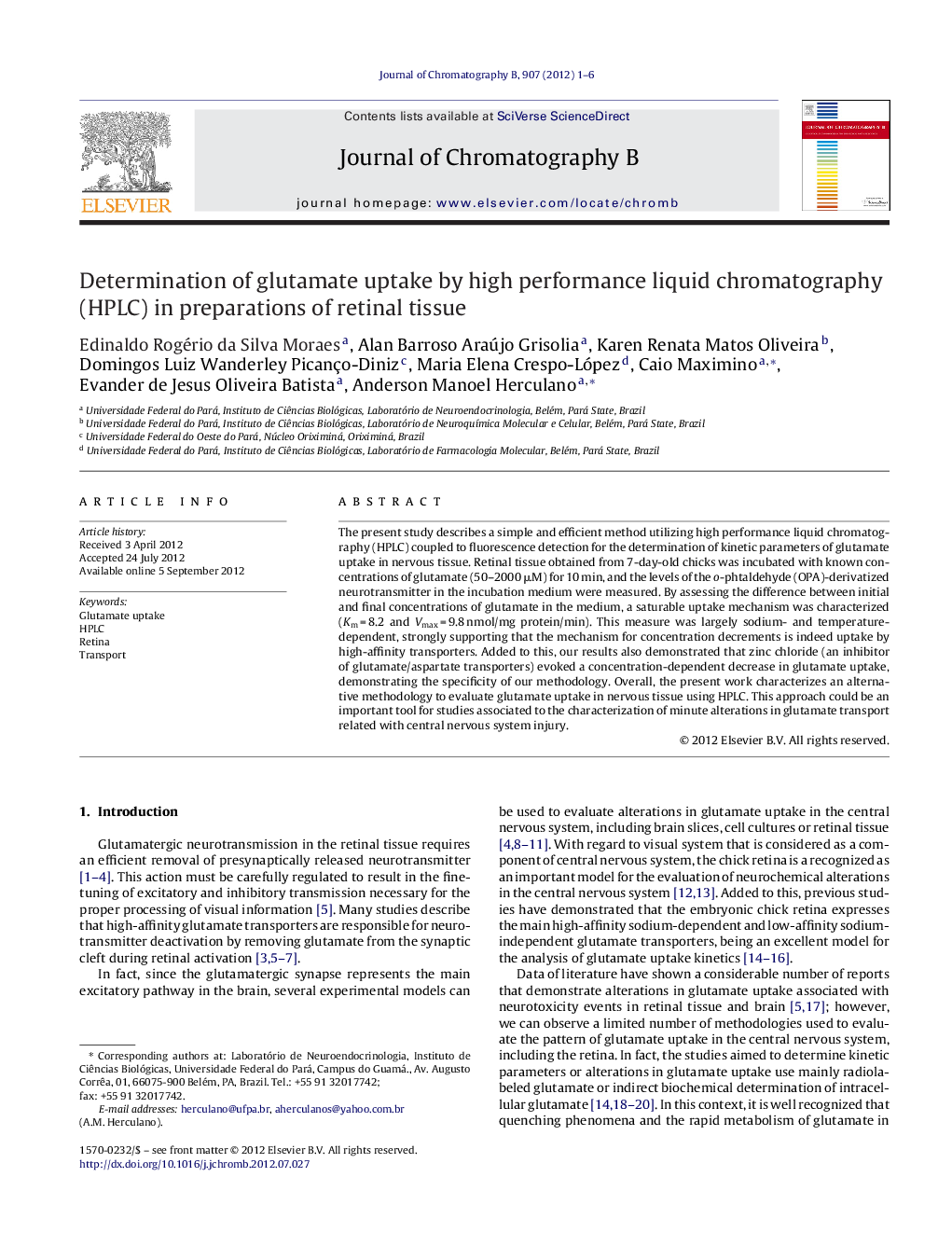| Article ID | Journal | Published Year | Pages | File Type |
|---|---|---|---|---|
| 1213785 | Journal of Chromatography B | 2012 | 6 Pages |
The present study describes a simple and efficient method utilizing high performance liquid chromatography (HPLC) coupled to fluorescence detection for the determination of kinetic parameters of glutamate uptake in nervous tissue. Retinal tissue obtained from 7-day-old chicks was incubated with known concentrations of glutamate (50–2000 μM) for 10 min, and the levels of the o-phtaldehyde (OPA)-derivatized neurotransmitter in the incubation medium were measured. By assessing the difference between initial and final concentrations of glutamate in the medium, a saturable uptake mechanism was characterized (Km = 8.2 and Vmax = 9.8 nmol/mg protein/min). This measure was largely sodium- and temperature-dependent, strongly supporting that the mechanism for concentration decrements is indeed uptake by high-affinity transporters. Added to this, our results also demonstrated that zinc chloride (an inhibitor of glutamate/aspartate transporters) evoked a concentration-dependent decrease in glutamate uptake, demonstrating the specificity of our methodology. Overall, the present work characterizes an alternative methodology to evaluate glutamate uptake in nervous tissue using HPLC. This approach could be an important tool for studies associated to the characterization of minute alterations in glutamate transport related with central nervous system injury.
► Michaelis–Menten kinetics was observed in the glutamate uptake by HPLC analysis. ► Glutamate uptake determination by HPLC was Na+ and temperature-dependent. ► GLAST inhibitor evokes a decrease concentration-dependent on the glutamate uptake.
